Structural damage detection using finite element model updating with evolutionary algorithms: a survey
- PMID: 29950788
- PMCID: PMC5997129
- DOI: 10.1007/s00521-017-3284-1
Structural damage detection using finite element model updating with evolutionary algorithms: a survey
Abstract
Structural damage identification based on finite element (FE) model updating has been a research direction of increasing interest over the last decade in the mechanical, civil, aerospace, etc., engineering fields. Various studies have addressed direct, sensitivity-based, probabilistic, statistical, and iterative methods for updating FE models for structural damage identification. In contrast, evolutionary algorithms (EAs) are a type of modern method for FE model updating. Structural damage identification using FE model updating by evolutionary algorithms is an active research focus in progress but lacking a comprehensive survey. In this situation, this study aims to present a review of critical aspects of structural damage identification using evolutionary algorithm-based FE model updating. First, a theoretical background including the structural damage detection problem and the various types of FE model updating approaches is illustrated. Second, the various residuals between dynamic characteristics from FE model and the corresponding physical model, used for constructing the objective function for tracking damage, are summarized. Third, concerns regarding the selection of parameters for FE model updating are investigated. Fourth, the use of evolutionary algorithms to update FE models for damage detection is examined. Fifth, a case study comparing the applications of two single-objective EAs and one multi-objective EA for FE model updating-based damage detection is presented. Finally, possible research directions for utilizing evolutionary algorithm-based FE model updating to solve damage detection problems are recommended. This study should help researchers find crucial points for further exploring theories, methods, and technologies of evolutionary algorithm-based FE model updating for structural damage detection.
Keywords: Dynamic characteristics; Evolutionary algorithms; Finite element model updating; Optimization; Residuals; Structural damage detection.
Conflict of interest statement
Compliance with ethical standardsThe authors declare that there is no conflict of interests regarding the publication of this paper.
Figures

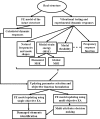
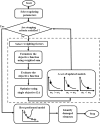

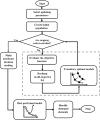
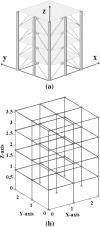
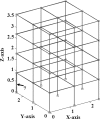






Similar articles
-
Vibration-Based Damage Detection Using Finite Element Modeling and the Metaheuristic Particle Swarm Optimization Algorithm.Sensors (Basel). 2022 Jul 6;22(14):5079. doi: 10.3390/s22145079. Sensors (Basel). 2022. PMID: 35890759 Free PMC article.
-
Structural damage detection using deep learning and FE model updating techniques.Sci Rep. 2023 Oct 31;13(1):18694. doi: 10.1038/s41598-023-46141-9. Sci Rep. 2023. PMID: 37907785 Free PMC article.
-
Bridge Model Updating Based on Wavelet Neural Network and Wind-Driven Optimization.Sensors (Basel). 2023 Nov 14;23(22):9185. doi: 10.3390/s23229185. Sensors (Basel). 2023. PMID: 38005571 Free PMC article.
-
Application of non-animal-inspired evolutionary algorithms to reservoir operation: an overview.Environ Monit Assess. 2019 Jun 15;191(7):439. doi: 10.1007/s10661-019-7581-2. Environ Monit Assess. 2019. PMID: 31203466 Review.
-
Multiobjective evolutionary algorithms: analyzing the state-of-the-art.Evol Comput. 2000 Summer;8(2):125-47. doi: 10.1162/106365600568158. Evol Comput. 2000. PMID: 10843518 Review.
Cited by
-
Application of Edge Computing in Structural Health Monitoring of Simply Supported PCI Girder Bridges.Sensors (Basel). 2022 Nov 11;22(22):8711. doi: 10.3390/s22228711. Sensors (Basel). 2022. PMID: 36433306 Free PMC article.
-
Structural Health Monitoring with Sensor Data and Cosine Similarity for Multi-Damages.Sensors (Basel). 2019 Jul 10;19(14):3047. doi: 10.3390/s19143047. Sensors (Basel). 2019. PMID: 31295926 Free PMC article.
-
Model-Based Damage Localization Using the Particle Swarm Optimization Algorithm and Dynamic Time Wrapping for Pattern Recreation.Sensors (Basel). 2023 Jan 4;23(2):591. doi: 10.3390/s23020591. Sensors (Basel). 2023. PMID: 36679386 Free PMC article.
-
Structural Online Damage Identification and Dynamic Reliability Prediction Method Based on Unscented Kalman Filter.Sensors (Basel). 2024 Nov 27;24(23):7582. doi: 10.3390/s24237582. Sensors (Basel). 2024. PMID: 39686119 Free PMC article.
-
Finite Element Model Updating of RC Bridge Structure with Static Load Testing: A Case Study of Vietnamese ThiThac Bridge in Coastal and Marine Environment.Sensors (Basel). 2022 Nov 17;22(22):8884. doi: 10.3390/s22228884. Sensors (Basel). 2022. PMID: 36433489 Free PMC article.
References
-
- Ciang C, Lee J, Bang H. Structural health monitoring for a wind turbine system: a review of damage detection methods. Meas Sci Technol. 2008;19(12):1–20.
-
- Fan W, Qiao P. Vibration-based damage identification methods: a review and comparative study. Struct Health Monit. 2011;10(1):83–111.
-
- Yan Y, Cheng L, Wu Z, Yam L. Development in vibration-based structural damage detection technique. Mech Syst Signal Process. 2007;21(5):2198–2211.
-
- Carden E, Fanning P. Vibration based condition monitoring: a review. Struct Health Monit. 2004;3(4):355–377.
-
- Joshuva A, Sugumaran V. A comparative study of Bayes classifiers for blade fault diagnosis in wind turbines through vibration signals. Struct Durab Health Monit (SDHM) 2017;12(1):69–90.
Publication types
LinkOut - more resources
Full Text Sources
Other Literature Sources
